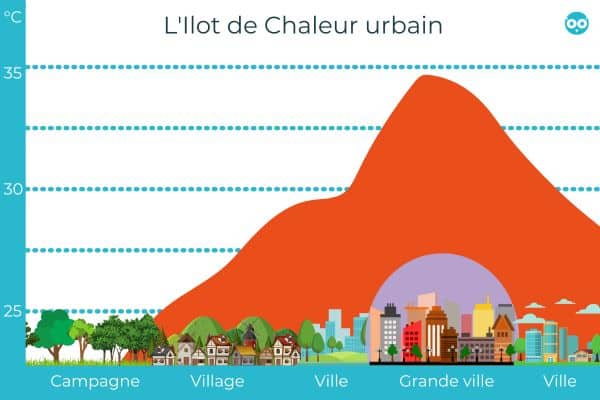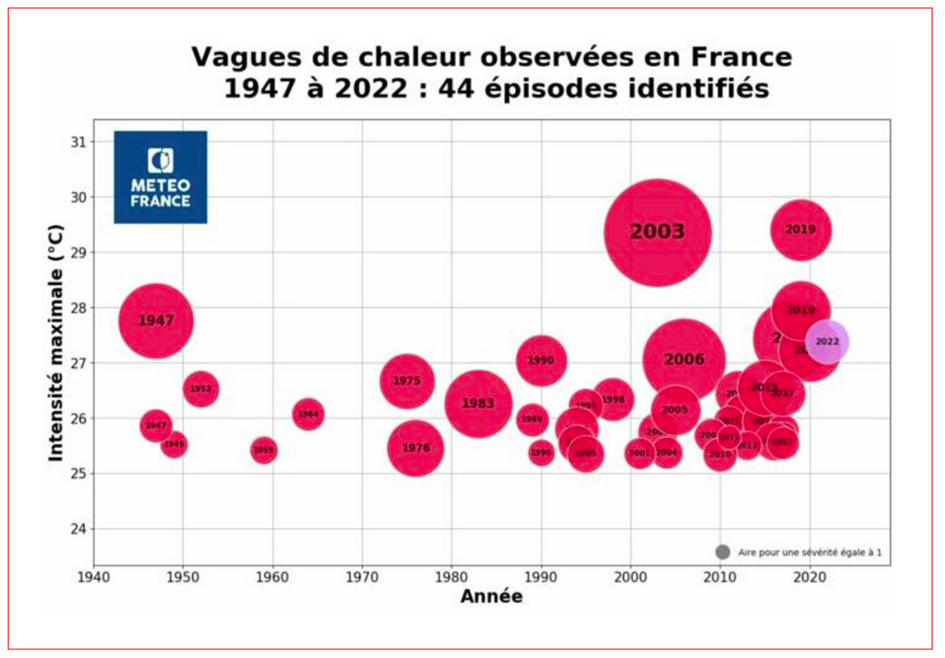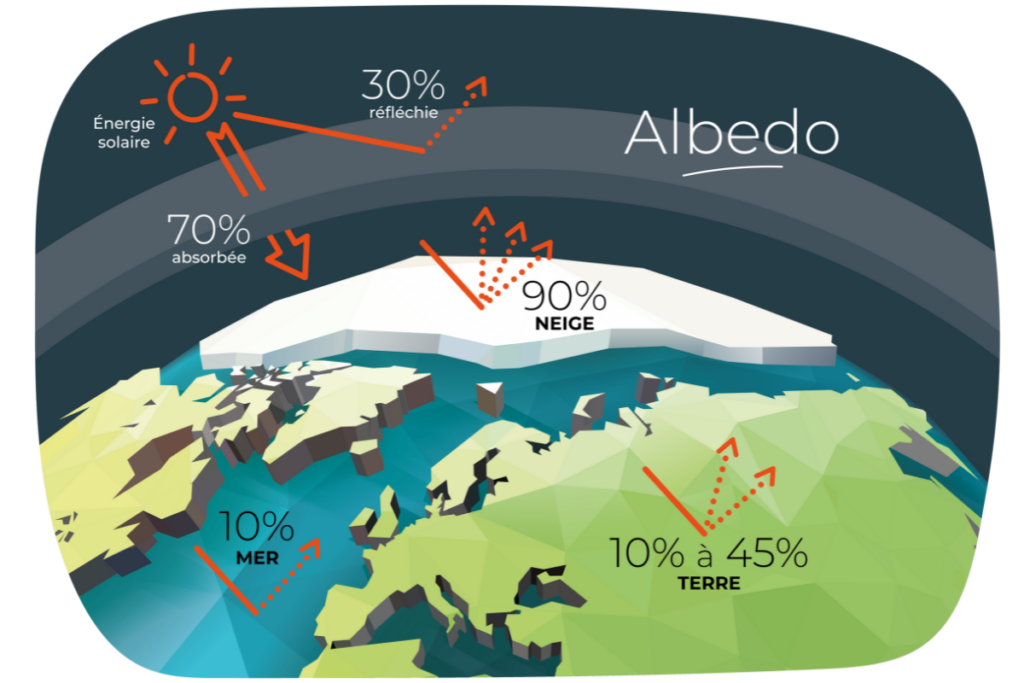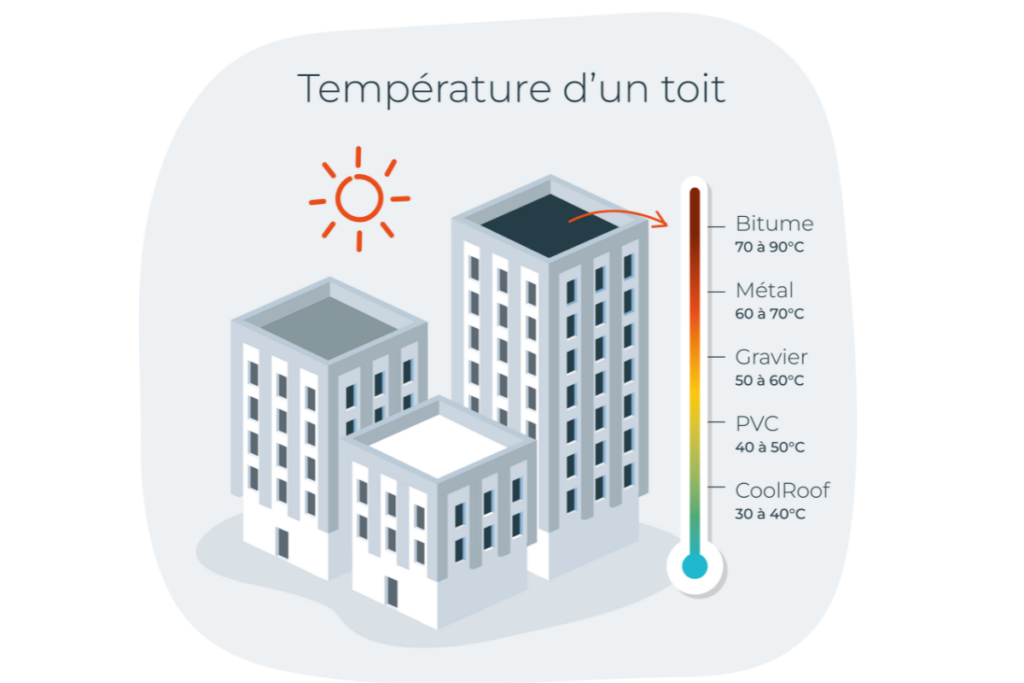The urban heat island (ICU), it’s a term that could almost be associated with something pleasant, as it is sweet to the ear. 
In fact, as early as 1818, scientific measurements highlight the difference of temperatures between the cities and their outskirts. If this difference was 3.7 °C during the first surveys, barely 100 years later, it is by an average of 6 °C (10 °C to Paris). You guessed it, climate change and the development of urbanization are not going to fix things.
But, let’s not fatalistic, solutions to remedy the effect of urban heat island already exist. You want to avoid overheating in the summer ? Read on.
The urban heat island (ICU) is an effect of dome climate, which creates an urban microclimate in which the temperatures are significantly higher. The closer we get to the city centre, the more heat intensifies and increases the thermometer.
It is a complex phenomenon, in which causes and consequences are mixed. But what is sure is that the concentration of buildings and waterproofing of the surfaces play a major role.
📌 We talked about it in detail in this article.

It is a fact, in urban areas, the extreme temperatures have a deleterious impact on the health and kill more than elsewhere. In France, nearly 3 000 deaths due to the heat were recorded for the episodes scorching in the summer of 2022.
According to a report published in The Lancet, the risk for over 85 years to die from hot to Paris is ” multiplied by 1.6 in average compared to the temperatures of comfort.” But of course, Paris is not the only city in question (that is, the + age of 85, not more). Therefore, it is urgent to take action to adapt our cities to climate change.

The accumulation of excessive heat in the cities is mainly related to the concentration of buildings and waterproofing of surfaces. Thus, on these two settings thatwe need to act.
The answer to the problem lies in the application of different measures that take into account the following factors :
The three measures are the most simple to implement, and which correspond to most of the specificities of the urban, both by the communities in which the companies are :
The vegetation of urban areas is a simple way to limit the accumulation of excessive heat and therefore, the urban heat island. 

Free cooling is a passive cooling system (or ventilation, intensive summer), which uses the temperature difference between the inside and the outside of a house, building or any other building to power the cooling system. It is also a useful tool, complementary to the greening of cities.
The two solutions that are the vegetation and the free cooling have their benefits, as the cool roofing tenfold through its action on the internal and external temperatures of the buildings. It promotes an urban ecosystem cooler, greener and better-ventilated area.
You wonder how it works ? You explained.
The cool roofing is a technique known since the Ancient times, which consists of painting roofs white to increase solar reflectivity, the so-called ” albedo “.

Abandoned in many countries over the centuries, its effectiveness and ease of implementation seduce to new.
The increase of the reflectance of roofs limit the build-up of heat inside the buildings, but also to the outside. As well, with the cool roofing, the ambient air of the neighborhood is more fresh than when the buildings retain the original color of their roof, often dark.

Our paint reflective Cool Roof adapts to many roofing materials and can also be applied on the walls. This solution allows to limit of 6 °C in average temperature in the interior of the building and divide by 2 , the temperature of media : oil, tiles, trays, steel… No adaptation of the structure of the building is not required, which minimizes the cost of the investment. Interesting, no ?
The icing on the cake, as soon as its application, our paint reflective will lower the temperature of the building and the neighborhood and will provide better growing conditions for the trees, letting them not only to combat overheating in summer.
👉 Then, to reduce the excessive temperatures in the cities in the summer, and preserve the environment, the green and the white will be your best allies.
1- Excess mortality attributed to heat and cold: a health impact assessment study in 854 cities in Europe – Study published in the Lancet, April 2023.
2- Between heatwaves and COVID 19, an excess of high – Publication on Public Life, November, 2022.